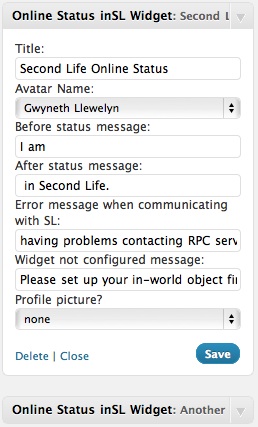The digital self
The first online environments, when the Internet was really very young and used by a tiny minority, but BBSs abounded, has brought us an interesting new abstraction. Since the days the telephone was invented, we started to view an abstract number (a sequence of digits) as “representing” a human being, or, more precisely, as a means to communicate with a human being. Thus, the number 555-1234 might represent Jane Doe, and if you wish to communicate with Ms Doe, all you need is to remember to dial 555-1234.
This doesn’t exactly mean that Jane Doe is 555-1234. The number 555-1234 is just an abstract manifestation of Jane Doe in the context of the telephone system. Being quite used to the telephone system these days, there are few philosophers that might claim that 555-1234 is effectively an “avatar” of Ms Doe in the “virtual world of telephoning” — but, in fact, that’s pretty much what it is. We’re just so used to the distinction between a telephone number and a flesh-and-blood person that we never think of it that way. After all, talking to a person instantaneously around the world is exactly the same as talking to that person sitting next to you, right?
Well, almost right, but not quite. When on the telephone, we automatically adopt a certain number of rules and procedures, and even a different language. We start by saying “Hello?” (or “Mochi-Mochi” in Japan…) and often, when the line is noisy, “Can you hear me?”. Since we lack body language — like looking meaningfully at someone, or doing a gesture indicating boredom — we use different things instead. “Meaningful silence” conveys a lot of expression. With enough training (and we all get that training pretty quickly from a tender age!) we can detect from someone’s voice if they’re happy or sad, even if they’re not really laughing or crying (some call centres train their operators to always answer with a smile, because the other party at the end of the line will be able to “sense” the smile).
When a couple of lovers spend ages on the phone, nobody will consider that “immersion in the telephone system” — although it’s exactly what it is (even though it might not be escapism — on the other hand, what is phone sex with a stranger but just another form of escapism?). We’re so “immersed” in voice communication without physical presence that, during a phone call, we forget all about the world around us — thus, no wonder most countries in the world limit the use of mobile phones while driving. And in polite business environments, it’s considered very rude to pick up phone calls in the middle of a meeting — because obviously that person is going to “forget” all about the meeting and focus on the person on the phone instead.
This, however, is so ubiquitous in our society that we totally ignore how immersive phone communications actually are. It’s just part of life in the 21st century, and we’re used to it for 130 or 140 years.
Computer-moderated communications added something else. BBS operators had “handles” or “nicknames”, and these were usually designed as merely a way to facilitate communication. My email address, gwyneth (dot) llewelyn (at) gwynethllewelyn (dot) net, is primarily designed to allow anyone on the Internet to send me email. It’s just an arbitrary sequence of letters and symbols that designate a communication port via SMTP that will eventually find the way to my computer, and is totally equivalent to the example given for Jane Doe’s phone number. My email address is not my self. I just express myself through email messages — and in a sense, by reading my emails, my friends, acquaintances, and colleagues can get a grasp about my thought processes, feelings and emotions, just like they can “see” if I’m smiling or crying on the phone.
As those “handles” or “nicknames” became more widespread, however, a certain interesting development occured. To a degree, you might never meet the “person behind the handle” at all, but just read what they write (or, if they’re artistically inclined, see their pictures/images/movies that have been released on the Internet under that nickname). From the perspective of someone who never met the “person behind the handle”, there is little difference between the “handle” and the “person”.
This is one of the most fundamental changes in the way we started to attribute importance to handles. But it shouldn’t come to us as a surprise — after all, again, call centre operators, when answering “You’ve called Linden Lab, how may I help you?” are the company. When you’re talking with a LL representative at the phone, that representative represents the company in your mind (and your attitude on the phone will represent what you think about the company). This, of course, is just a step of further abstraction of what happens when you go to a shop and talk to an attendant there — for you, that attendant is the company, even if she might be just a humble employee and barely know the company’s mission and values.
The ability to extrapolate from a part to the whole is typically human, for positive and negative reasons — after all, on the negative side, it’s at the core of racism, homophobia, chauvinism, fundamentalism, and all other negative emotions where you classify a whole group of people based on your direct contact and experience with an element of that group. The novelty here is that “nicknames” or “handles” (just like “telephone numbers”) tend to be uniquely identified with the individual who bears that handle.
Thus, in normal conversation, we don’t usually say “I’ll drop a message to Gwyn’s electronic email address for her to read” (although that form of speaking hasn’t still completely vanished) but we tend to say “I’ll talk to Gwyn by email over it”. The difference is subtle. In the first case, we’re still considering the medium (SMTP, in this case) to be relevant for communication. In the second case, the medium is less relevant, just the ability to communicate to the individual matters.
It’s a bit premature to extrapolate to saying that someone “is” their email address, like we perfectly know that someone is not their phone number. However, there is certainly a strong bond between both. And to a degree, we’re “protective” of our handles — we get furious when our phone number is bombarded by marketing call centres and our email address by spammers.
When enough data about a person is available digitally, and when the primary mode of communication with that person is, indeed, in digital form, it also means that the perception others have of the “person behind the nickname” is entirely based upon what they publish about themselves digitally (text, images, videos, and, well, avatars…). This concept of digital self is the object of serious research, since it’s quite a new area. If you’re not willing to read that paper to the end, the abstract is here:
The impact of others in telecopresence on the formation of self has not been well studied. Existing research on self in cyberspace has mostly focused on issues related to the presentation of self. A major question researchers have been trying to answer is how people present their selves to others when they become disembodied and anonymous in the online world. The question the present study attempts to answer, however, is almost the other way around – how do people come to conceive their selves when others become disembodied and anonymous? This question is particularly important for understanding the influence of the Internet on teenagers who are yet to form a stable view of themselves. It has been found that the characteristics of the telecopresent others do produce a different “looking glass” that gives rise to a digital self which is different from the self formed offline. Teenagers’ playful online performances are therefore an integral part of the process of self formation. As such, the “intimate strangers” or “anonymous friends” teenagers associate with on the Internet play an important role in affecting the development of self in online children.
Although that paper in question addresses mostly the how and why children and teenagers reinvent themselves when communicating online, it still manages to make a point: disembodied communication through a digital medium allows us to explore different facets of our self.






